Conjuring images of sunsets and autumn, fruit and fire, the colour orange is associated with both gentle warmth and lively zest.
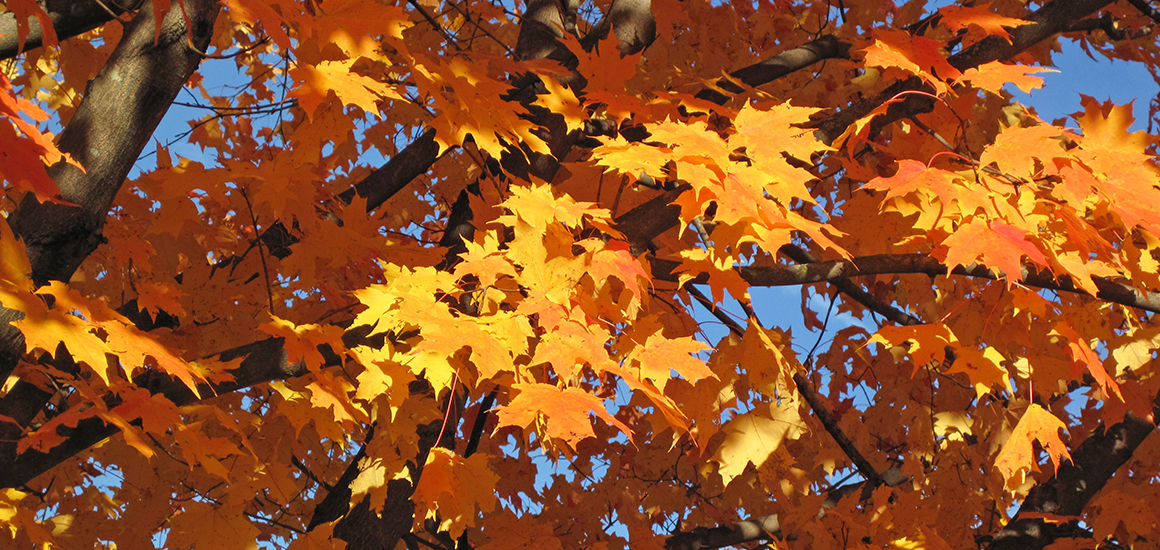
Sugar maples, Acer saccharum, take on spectacular fiery colours such as orange in autumn © James St John, licensed under CC BY 2.0
Meet 10 animals, plants and fungi using orange to their advantage.
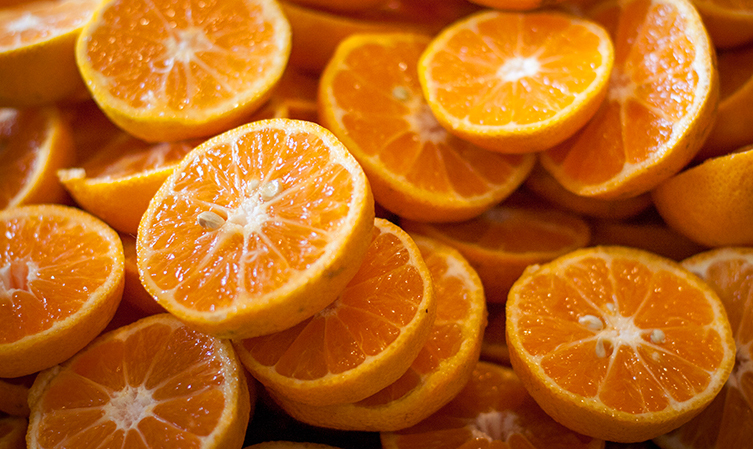
Surprisingly, the colour was named after the fruit, and not the other way around © Caitlin Regan, licensed under CC BY 2.0
Orange (Citrus × sinensis and Citrus × aurantium)
There are two types of orange, bitter and sweet. The tastier sweet kind didn't reach Europe until the late sixteenth century.
While the word orange originally entered the English language in the fourteenth century, it wasn't used as the name for the colour for about another 200 years, when sweet oranges were more widespread. Before then, the colour was referred to as a shade of yellow-red.
Although oranges are not found in the wild, sweet oranges were first cultivated in China - and in some languages they are still called 'Chinese apples'.
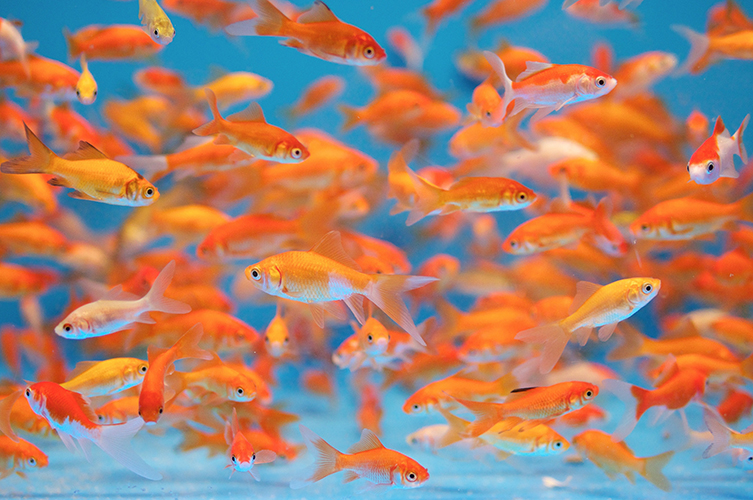
Goldfish are the most common aquarium fish worldwide © AuKirk/Shutterstock.com
Goldfish (Carassius auratus)
The humble goldfish is a member of the carp family and, like its larger koi cousins, was first domesticated in China more than a thousand years ago.
The original fish were silvery, until a natural mutation caused a gold colouration, which the Chinese cultivated and bred to create the modern goldfish. They didn't arrive in Europe until the seventeenth century.
Goldfish are often maligned as having a memory of only a few seconds. But experiments disprove this. Researchers have trained fish to respond to audible or visual cues for feeding times and locations. Results show that goldfish memories can last several months.
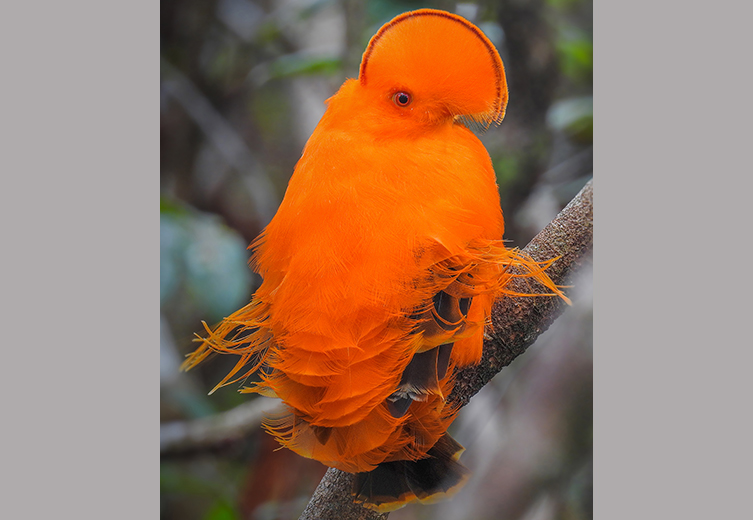
Guianan cock-of-the-rocks live in the rainforests of South America and are almost entirely covered in dazzling orange feathers © Aisse Gaertner, licensed under CC BY-SA 4.0, via Wikimedia Commons
Guianan cock-of-the-rock (Rupicola rupicola)
The bright orange feathers and half-moon crest of the male Guianan cock-of-the-rock is all for show. The mating display is elaborate - the males form a pack, called a lek, and engage in competitive displays.
The dark grey female makes her choice by hopping down to the floor behind her chosen mate and pecking him on the behind, at which point he turns around and gets straight down to business.
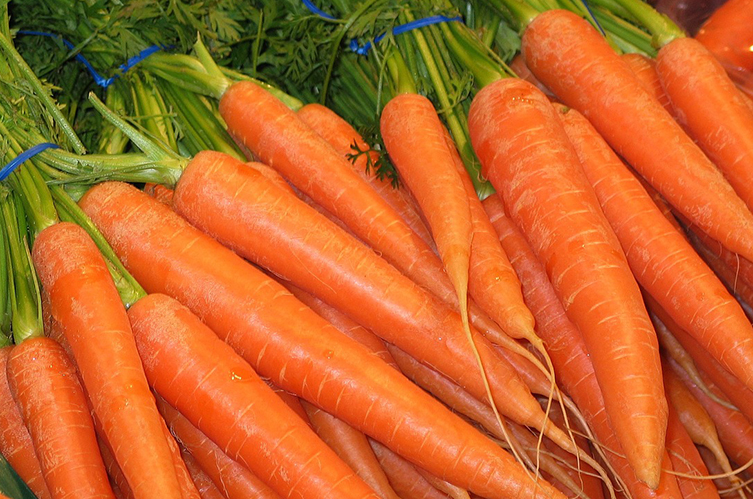
Although carrots are known for their bright orange colour, they also come in purple and yellow varieties. Image released by Pixabay under Creative Commons CC0.
Carrot (Daucus carota sativa)
Carrots brighten up salads across Europe, but not all carrots are orange. In fact, wild carrots were originally white or purple, and it was the purple variety and a yellow mutation that were first cultivated in Afghanistan.
The pure orange carrot was first cultivated from the yellow variety in the Netherlands in the eighteenth century. A popular theory goes that the orange colour was favoured there to flatter the ruling House of Orange, but the truth is more likely that orange varieties discolour soups less.
Carrots won't give you night vision, but the chemical that makes them orange does help you see in dim light. The colour is caused by the pigment beta carotene, which is broken down by the liver into vitamin A and used by the eye to improve light sensitivity.
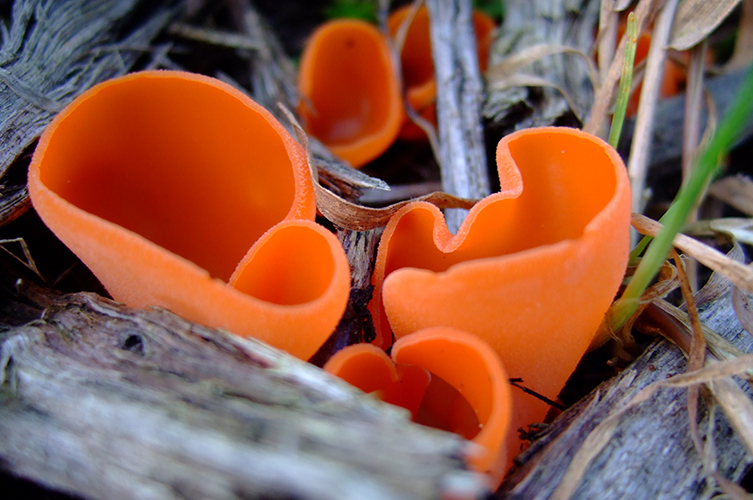
The orange peel fungus is a cup fungus, consisting of folds shaped like cups © Aiwok, licensed under CC BY-SA 3.0, via Wikimedia Commons
Orange peel fungus (Aleuria aurantia)
As the name suggests, the orange peel fungus looks like a careless case of littering by someone enjoying the citrus fruit.
The fungus, like many others, gains its nutrients from breaking down dead organic matter, helping to recycle carbon.
The orange peel fungus is found across North America and Europe. While it is listed as edible, it is often not harvested in Europe due to its close resemblance to toxic species.
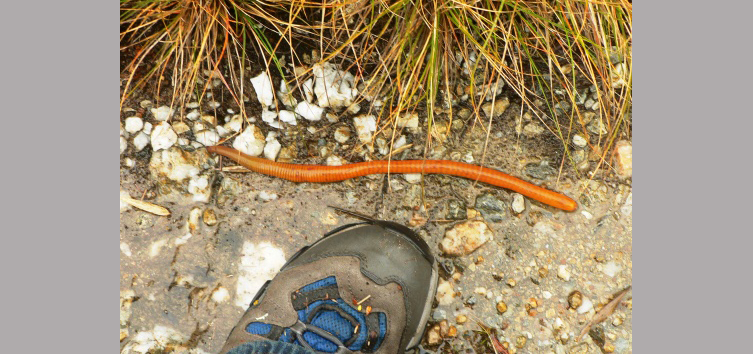
The underside (shown here) of this carnivorous leech is bright orange. It chews up earthworms with primitive jaws. Image by José Grau de Puerto Montt.
Leech (Americobdella valdiviana)
This large leech can grow to an intimidating 30 centimetres long but, although it is carnivorous, it poses no danger to humans. Instead, it feeds on earthworms in its native Chile.
Rather rare, the leech is also less easy to spot than you might expect - while its tummy is often bright orange, its back is a more subdued grey. And the colours vary - some individuals are pale with stripes.
Surprisingly, there is a debate in the scientific literature about whether this species has eyes or not.

The fiery orange associated with eastern American and Canadian maples in particular is produced by a combination of chemicals © ver0nicka/Shutterstock.com
Autumnal maple leaves
Many leaves contain carotenoids, the pigments that also give carrots their colour, year-round. Their colour is usually masked by green chlorophyll, but this is replaced more slowly in the leaves in autumn, allowing the yellow-orange of the carotenoids to shine through.
For the bronze and bright orange of maples, anthocyanin pigments enhance the carotenoid colour. Anthocyanins are only produced at the end of summer, as a complex result of temperature and light. Cool, bright autumns provide the most vibrant displays.
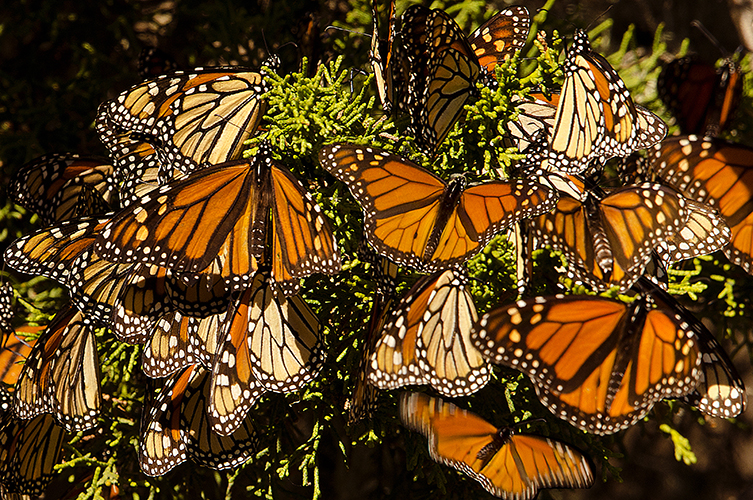
The monarch butterfly's bright colour warns predators that it is poisonous © Michael Warwick/ Shutterstock.com
Monarch butterfly (Danaus plexippus)
The monarch butterfly is easily identified by its striped orange-and-black colouring, which warns predators that it's dangerous to eat. But its most distinctive feature is probably the mass migration it undertakes.
Every year, millions of monarchs migrate from eastern Canada to the forests of central Mexico where they overwinter. However, their numbers have been dwindling rapidly, with populations declining 90% over the past two decades due to habitat loss.
In 1996-97, orange monarchs blanketed around 45 acres (18.19 hectares) of Mexican forest, whereas in 2013-14 they covered just 1.66 acres (0.67 hectares).
Monarch numbers rose slightly in 2014-15 and again in 2015-16, to cover 9.9 acres (4.01 hectares) of forest, but conservationists warn it's not enough to bring them back from the brink of extinction yet.
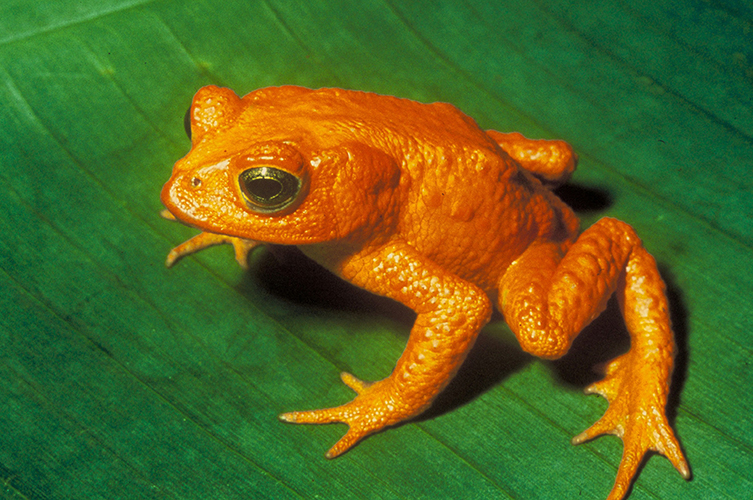
Despite extensive searches, the golden toad hasn't been recorded since 1989 © Charles H Smith (US Fish and Wildlife service), public domain via Wikimedia Commons
Golden toad (Incilius periglenes)
The toad was once common in its native cloud forests of Costa Rica, and bred in large numbers in 1987. Just one year later, scientists only observed eight males and two females at known breeding areas. The very last recorded sighting of the species was a single male in 1989, and it is now considered extinct.
The golden toad may have been a victim of the infectious disease chytridiomycosis, compounded by habitat loss, global warming and airborne pollution.
Chytridiomycosis, which is caused by a fungus, continues to have a devastating impact on hundreds of amphibian species. But in 2015 researchers announced a major breakthrough when they managed to eliminate the disease from a wild toad population for the first time.
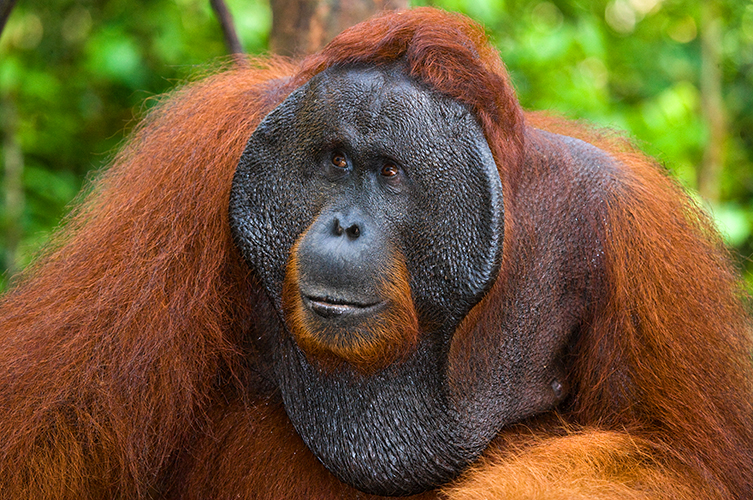
Despite the 'orang' in their name, the word orangutan actually comes from the Indonesian words for man (orang) and forest (hutan) © Gudkov Andrey/Shutterstock.com
Orangutan (Pongo species)
Orange (or a reddish orange-brown) is one bright colour that occurs in the fur of some mammals, and orangutans use it for camouflage. The murky peat ponds of their native forests reflect a muddy orange light, and up in the canopy the bright leaves help to make these large apes a mere silhouette.
Both male and female orangutans are brightly coloured, so unlike birds the colour isn't used by males to show off. However, orangutans are one of the primates that display strong differences between the sexes.
Instead of a distinctive, flashy colour, the males have large cheek pads that make their face look bigger and help project their calls.
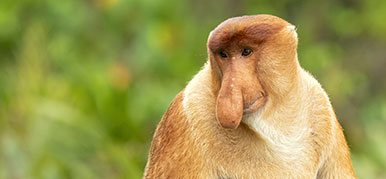
What on Earth?
Just how weird can the natural world be?
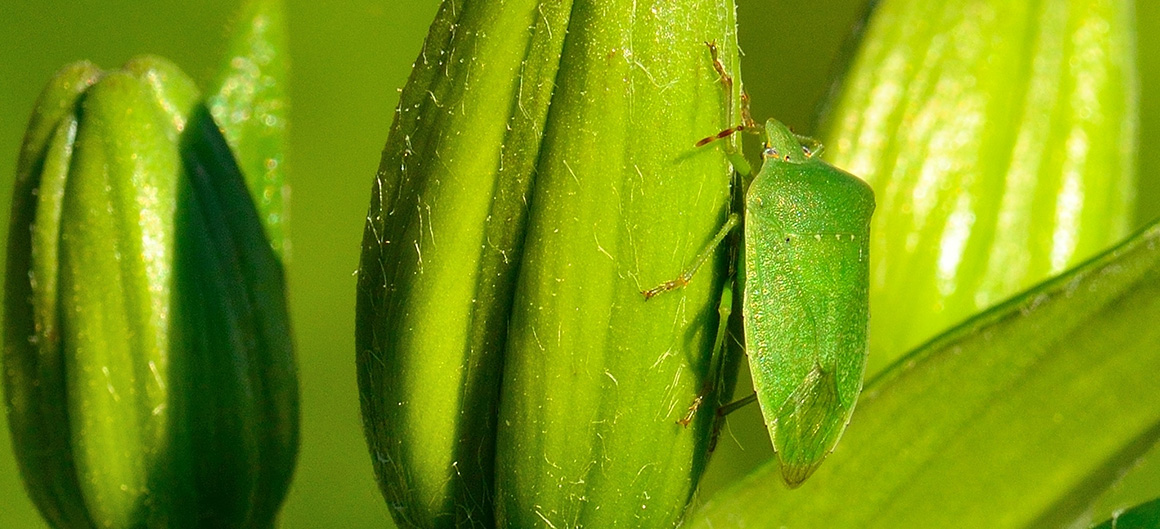


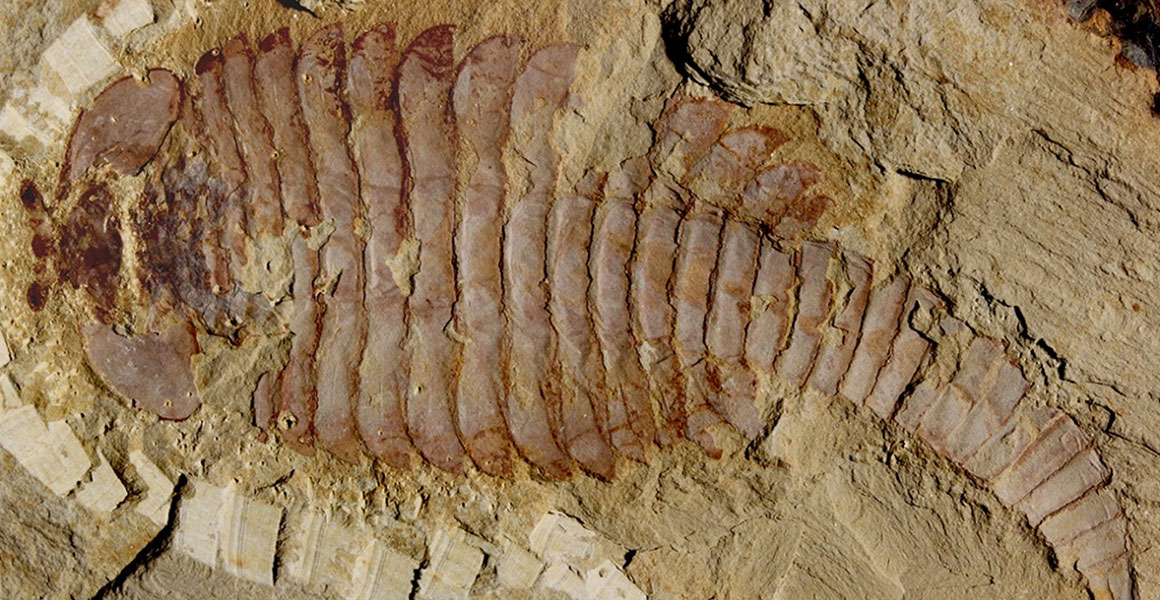
Don't miss a thing
Receive email updates about our news, science, exhibitions, events, products, services and fundraising activities. We may occasionally include third-party content from our corporate partners and other museums. We will not share your personal details with these third parties. You must be over the age of 13. Privacy notice.
Follow us on social media